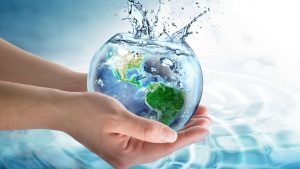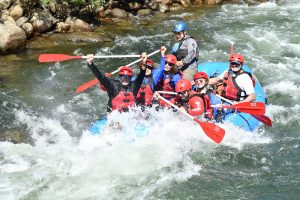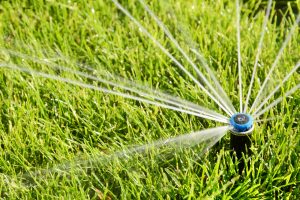Let’s face it. We can’t very well go whitewater rafting without water conservation. Water conservation is much more than picking up your trash. It’s recognizing the issue and spreading awareness. It’s working as a community to leave clean water for the next generation. Take a look at some of our conservation and Leave No Trace ethos.
We love our rafting our white waters here in Colorado. But how does water quality affect your rafting life and why should you take part in managing it? We’re going to dive into Colorado water conservation and answer those questions for you.
What Makes Colorado Water Special?
Here in Colorado, we’re known as the headwaters state. Water flow from melting snowpack starts here in our mountains and runs to 18 states in the US through the Arkansas River. Plus the Colorado River flows into Mexico, making our water International. We also have eight major river basins and several aquifers. That’s a lot of water! But when water starts here, so does our need to be careful in our management of this life-giving asset. And to enjoy whitewater rafting for years to come, we have to work at protecting and conserving our whitewater.
What Issues are Affecting Our Rivers? 
On a planet that’s made up of 71% water, why are we worried about running out? With droughts and climate change, fresh water levels are dropping to record low levels. Glaciers of freshwater are melting into the sea. And increased demand by agriculture, manufacturing, food production, power generation, lawns, pools, and household use means land is drying up. Pollution and runoff from heavily populated areas clog up our rivers and streams. It doesn’t take a rafting enthusiast to be passionate about water conservation. But whether you’re at home or in a raft and shooting the rapids, there are things we all can do.
What Are the Benefits of Water Conservation?
Water Flow
Can you imagine a whitewater rafting trip without the rapids tossing you around? That fun chaos in white, frothy water is because of rapid water flow over rocks and other features on the riverbed. The waters you traverse, like the Arkansas River and Colorado River, depend on healthy river flow. And without it, your rafting trip comes to a halt. But water flow does more than that. Plants and animals depend on moving water to live. The flora and fauna of Browns Canyon are an example. So when you put your oars in the water, that forward motion is a sign of great water conservation!
Water Metering
As stewards of this planet, we must responsibly use water. That’s why water metering is so important. You know of it in your house and see it when you pay your water bill every month. Metering controls the amount of water entering the property. This plays a huge role in water flow as well. Metering also takes place at dams, controlling water levels and flow, controlling the amount of water released from a reservoir down river. This allows you to navigate the white water rapids in your raft.
How Can I Protect Our Rivers for Rafting?
Know Where Your Water Starts
If you’re a local Coloradan, it’s not hard to identify where your water comes from. Snow fall from September through May builds up and waits until summer to melt and flow down the mountains and into our reservoirs, rivers, and homes. Find out where your water company sources your household water from. Or check out the EPA’s page on water mapping. Knowing where your water originates can instill pride and care for taking care of it. And on that next whitewater rafting trip, you can smile knowing you know where the water starts and how it ends up under your Kodi raft.
Protect the Storm Drains
No one wants to take a trip down a river that’s oily and filled with trash. Rafting aside, plant and animal life suffer as well. Did you know that the storm drain at your curb leads directly and unfiltered to your water source? Anything that goes into the storm drains ends up in the water. That’s why it’s important to ensure only rainwater flows into them. Absolutely no dumping from changing your engine’s oil. And of course trash goes in the proper receptacles.
Keep the Yard Under Control
Certain types of turf can be detrimental to water conservation. Some species of grass need large amounts of water. And in times of drought and hot weather, the outcome can be rough on your water supply. Easy approaches like replacing your plants with more drought-conscious species does wondrous things. Rock gardens in place of large swaths of green grass are a nice option. And drought-resistant and species with low water requirements make your life easier by not needing to water all the time, and to ensure your water bill stays as low as possible. Keep the water in the river and raft it instead!
Always Use Water Wisely
An average bath uses anywhere from 35-50 gallons of water each time you jump in your soaking tub. If the grass and plants aren’t wasting it, bathing is. Now that doesn’t mean we’re advocating for lax hygiene. No, hopping in one of our rafting boats without washing first (it’s awkward for everyone) is not our recommendation at all! Turning off the water when brushing your teeth or doing dishes is a great place to start. Switching to showers drops water usage from that 35-50 gallons to just 10 gallons. And you can even shut off the shower water while soaping up to be extra conservative. That time and water saved is well spent on a white water rafting trip with your family.
There are many more ways you can go about water conservation where you live. Like cleaning up after your pets and keeping your lawn a longer length to protect the soil and avoid evaporation, fix any household leaks, and avoiding using salt on icy sidewalks. Learn more about #Water22 tips for water conservation. And did you know that March 22nd is World Water Day? There’s no need to wait until your next whitewater rafting trip down the Colorado River to understand the importance of our water management here in Colorado that flows downstream to so many others.
Everything is a hierarchy and the water world is no different. As human beings, we’re at the top of the water food chain. This means we must take care of our resources. We know you’re excited to get out on the water and experience whitewater rafting. But rafting far into the future requires clean, healthy water. It’s a cause we all have to contribute to. If you want to see what you’re fighting for, book a trip with Kodi Rafting, and let’s get you out on a raft trip!
